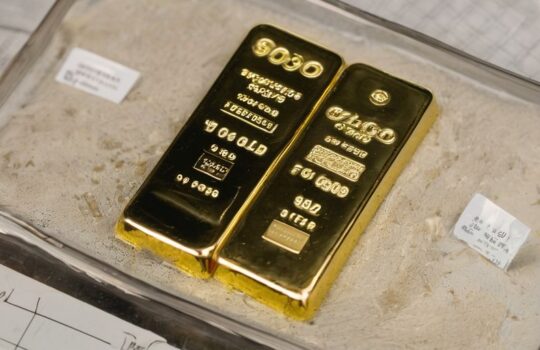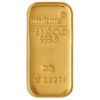Gold Price Forecast: XAU/USD holds above $2,060 amid the quiet session

Factors Affecting Gold Price

Global Economic Conditions
Global economic conditions play a crucial role in influencing the gold price. Economic indicators such as GDP growth, inflation rates, and interest rates can impact investor sentiment and their demand for safe-haven assets. For example, during times of economic uncertainty or recession, investors tend to flock towards gold as a hedge against market volatility. Additionally, geopolitical tensions and trade disputes can also contribute to fluctuations in the gold price. It is important for gold traders to closely monitor global economic developments and their potential impact on the gold price.
Inflation and Interest Rates
Lower interest rates benefit the yellow metal as they decrease the opportunity cost of holding non-gold investments. Last week, November’s Core Personal Consumption Expenditures Price Index (Core PCE) came in at 0.1% MoM, below the market consensus of 0.2%. On an annual basis, the Core PCE showed the smallest rise since April 2021, arriving at 3.2% YoY from 3.4% in October, worse than the market expectation of 3.3%.
Geopolitical Tensions
Yemen continues to threaten the Red Sea, but there are also concerns about a wider threat to shipping. Iran said it could shut down the Gibraltar Strait, which is something that most people doubt. This, in turn, might lift the price of a safe-haven asset like gold. Moving on, gold traders will keep an eye on the developments surrounding the geopolitical tension in the Middle East. The US Richmond Fed Manufacturing Index for December and the Initial Jobless Claims will be due on Wednesday and Thursday, respectively.
Technical Analysis of XAU/USD

Support and Resistance Levels
Support and resistance levels play a crucial role in technical analysis of the XAU/USD. These levels are price levels at which the market has historically shown a tendency to reverse or stall. Traders use support and resistance levels to identify potential entry and exit points for their trades. They can also be used to set stop-loss orders to limit potential losses. It is important to note that support and resistance levels are not fixed, but rather dynamic and can change over time as market conditions evolve. Traders often use various technical indicators and chart patterns to confirm the validity of support and resistance levels.
Trend Analysis
In the technical analysis of XAU/USD, trend analysis plays a crucial role in predicting the future movement of gold prices. By identifying and analysing the patterns and trends in the price chart, traders and investors can gain insights into the market sentiment and make informed decisions. Trend analysis helps in identifying the direction of the trend, whether it is an uptrend, downtrend, or a sideways trend. It also helps in determining the strength of the trend and potential reversal points.
One important aspect to consider in trend analysis is the resale value of gold. The resale value of gold is influenced by various factors such as market demand, economic conditions, and geopolitical tensions. Traders and investors should closely monitor these factors to assess the potential profitability of their gold investments.
To effectively analyse trends, traders can use technical indicators such as moving averages, trendlines, and momentum oscillators. These indicators help in confirming the direction of the trend and identifying entry and exit points for trades.
In addition to technical analysis, it is also important to consider fundamental factors that can impact the trend of gold prices. Factors such as central bank policies, inflation rates, and global economic conditions can have a significant influence on the trend of gold prices. Therefore, traders and investors should stay updated with the latest news and developments in these areas to make well-informed trading decisions.
Chart Patterns
Chart patterns are an important tool in technical analysis for predicting future price movements. They are formed by the price action of an asset over a specific period of time and can provide valuable insights into market sentiment and potential trend reversals. Some common chart patterns include head and shoulders, double tops and bottoms, triangles, and flags. Traders and investors use these patterns to identify potential entry and exit points for their trades. It is important to note that chart patterns should not be used in isolation and should be confirmed with other technical indicators and analysis.
Market Sentiment and Investor Behaviour
Safe-Haven Demand
There are concerns about a wider threat to shipping, particularly in the Red Sea, and the possibility of Iran shutting down the Gibraltar Strait. These geopolitical tensions create a sense of uncertainty and doubt, which can increase the demand for safe-haven assets like gold. Gold traders will closely monitor the developments in the Middle East as they can have a significant impact on the price of gold. In addition, the US Richmond Fed Manufacturing Index and Initial Jobless Claims data will be released this week, providing further insights into the economic conditions. It is important for investors to consider the potential risks and uncertainties associated with geopolitical tensions and economic indicators when making investment decisions.
Speculative Trading
Speculative trading in the gold market involves buying and selling gold with the expectation of making a profit based on short-term price fluctuations. Traders who engage in speculative trading often use technical analysis and market sentiment indicators to identify potential entry and exit points. It is important to note that speculative trading carries a high level of risk and is not suitable for all investors. Here are some key points to consider when engaging in speculative trading:
- Market Volatility: The gold market can be highly volatile, with prices fluctuating rapidly. Traders should be prepared for sudden price movements and have a risk management strategy in place.
- Leverage: Speculative traders often use leverage to amplify their potential profits. However, leverage also increases the risk of significant losses. Traders should carefully consider their risk tolerance and use appropriate leverage levels.
- Technical Analysis: Technical analysis involves studying historical price patterns and indicators to predict future price movements. Traders may use chart patterns, support and resistance levels, and trend analysis to inform their trading decisions.
- Market Sentiment: Market sentiment refers to the overall attitude and emotions of market participants towards gold. Traders may monitor news, economic data, and investor sentiment indicators to gauge market sentiment and make informed trading decisions.
Remember, speculative trading requires careful analysis, risk management, and a thorough understanding of the gold market. It is always advisable to consult with a financial advisor or professional before engaging in speculative trading.
Investor Sentiment
Investor sentiment plays a crucial role in the gold market. It reflects the overall attitude and confidence of investors towards gold as an investment. Financial security is one of the key factors that influence investor sentiment. During times of economic uncertainty or market volatility, investors often turn to gold as a safe-haven asset to protect their wealth. The demand for gold increases as investors seek a stable and reliable store of value. This increased demand can drive up the price of gold. It is important for investors to closely monitor the financial security landscape and assess the impact it may have on investor sentiment and the gold market.
Impact of Central Bank Policies
Monetary Policy Decisions
Monetary policy decisions play a crucial role in shaping the gold market. The actions and statements of central banks, such as the Federal Reserve, can have a significant impact on the price of gold. Lower interest rates, for example, decrease the opportunity cost of holding non-yielding assets like gold, making it more attractive to investors. On the other hand, higher interest rates can increase the opportunity cost of holding gold and may lead to a decrease in demand. Additionally, quantitative easing measures implemented by central banks can also affect the gold market. These measures, which involve the purchase of government bonds and other securities, can increase the money supply and potentially lead to inflation, which is often seen as a positive factor for gold prices. It is important for investors to closely monitor central bank policies and announcements to stay informed about potential changes that could impact the gold market.
Quantitative Easing Measures
Quantitative easing measures have a significant impact on the gold market. These measures involve the central bank buying government bonds and other securities to inject liquidity into the economy. By increasing the money supply, quantitative easing aims to stimulate economic growth and boost inflation. Buy Gold Bullion is a popular strategy during periods of quantitative easing as investors seek to protect their wealth from potential currency depreciation and inflation. The increased demand for gold bullion can drive up its price. It is important for investors to carefully monitor central bank policies and the implementation of quantitative easing measures as they can have a profound effect on the gold market.
Currency Depreciation
Currency depreciation can have a significant impact on the price of gold. When the value of a currency decreases, investors often turn to gold as a safe-haven asset to protect their wealth. This is because gold is seen as a store of value and a hedge against inflation. As the value of a currency depreciates, the price of gold tends to rise, making it an attractive investment option for those looking to secure their financial future. In addition, currency depreciation can also increase the demand for gold in countries where the local currency is weakening, as investors seek to preserve the value of their assets.
Demand and Supply Dynamics

Jewellery and Industrial Demand
Jewellery and industrial demand play a significant role in the gold market. The demand for gold in the jewellery industry is driven by factors such as cultural traditions, fashion trends, and personal adornment. Gold is highly valued for its beauty and durability, making it a popular choice for jewellery. In addition, gold is used in various industrial applications, including electronics, dentistry, and aerospace. The metal’s unique properties, such as its excellent conductivity and resistance to corrosion, make it indispensable in these industries. The demand for gold in both the jewellery and industrial sectors contributes to the overall demand and price of the precious metal.
Gold Mining Production
Gold mining production plays a crucial role in determining the overall supply of gold in the market. It refers to the process of extracting gold from the earth’s crust through various mining techniques. The quantity of gold produced by mining companies directly impacts the availability and pricing of gold bullion in the market. Gold bullion dealers closely monitor the production levels to assess the future supply and demand dynamics of the precious metal. Additionally, fluctuations in gold mining production can also have an impact on the overall sentiment and investor behaviour in the gold market.
Gold Reserves and ETFs
Gold reserves and exchange-traded funds (ETFs) play a significant role in the gold market. Gold reserves refer to the amount of gold held by central banks and other financial institutions. These reserves serve as a store of value and a hedge against economic uncertainties. On the other hand, ETFs are investment vehicles that allow investors to gain exposure to the price of gold without physically owning the metal. They track the performance of gold and provide liquidity and convenience to investors. Both gold reserves and ETFs contribute to the overall demand and supply dynamics of the gold market.










